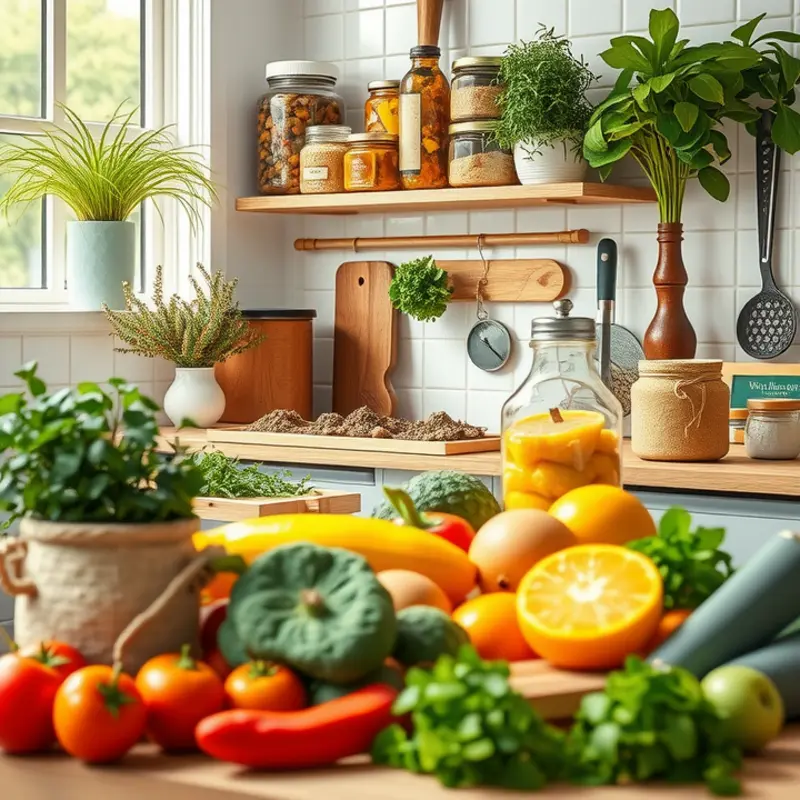Efficient food storage is key to reducing waste and maximizing your culinary efforts. With simple techniques, you can keep leftovers fresh, minimize spoilage, and make the most out of your kitchen creations. This guide offers practical methods for storing various types of food, ensuring that your efforts in the kitchen yield lasting benefits. Let’s dive into effective ways to preserve your leftovers and keep your meals enjoyable for days to come.
The Art of Proper Storage Containers

Choosing appropriate storage containers significantly impacts the preservation of leftovers. Selecting the right material is the first step towards extending the shelf life of your dishes. Glass, for instance, is non-toxic, doesn’t leach chemicals, and is ideal for acidic foods like tomatoes. It’s also perfect for reheating items in the oven or microwave. However, it’s heavier and requires careful handling.
Plastic containers offer versatility and variety in sizes. Look for BPA-free options to minimize chemical leaching. While plastic is lightweight and shatterproof, it’s not well-suited for hot foods unless labeled as microwave-safe. For storing dry goods or packed lunches, plastic can be a budget-friendly choice.
For more eco-conscious storage, consider stainless steel. Durable and resistant to odors, stainless steel containers are excellent for dry or chilled storage. However, they should not be used in the microwave and may not be ideal for liquids since they typically are not transparent, which can make identifying contents challenging.
When it comes to storing liquids, silicone bags are an innovative solution. They are flexible, easy to seal, and microwave, freezer, and dishwasher safe. They’re excellent for soups, sauces, or marinated foods. A related link offers additional strategies for safely storing sauces.
Choosing the right size of container is just as important as selecting the material. Smaller containers are preferred for single portions, helping in limiting excess air that can accelerate spoilage. For bulk storage, opt for larger jars or tubs, ensuring they are not filled to the brim to allow for expansion, especially when freezing.
Airtight seals and leak-proof lids are crucial features. They assist in maintaining freshness and preventing odors from escaping or intermingling in your fridge. Check that your lids have proper locking mechanisms; they’re essential for soups and other liquid-based foods.
The use of clear containers can simplify tracking leftovers at a glance. Transparency eliminates the need for guessing games, decreasing the chances of forgotten foods lingering until they’re no longer safe to consume. A labeling system can further improve efficiency: write contents and dates to keep an orderly pantry or refrigerator.
For those interested in sustainable practices, consider containers made from recycled materials or those designed to reduce food waste. They not only support a healthier environment but can sometimes extend freshness with specialized designs.
The investment in proper storage solutions goes a long way. It reduces waste and preserves flavors, safeguarding both your meals and your budget.
Techniques for Temperature Control

Temperature is a key factor in the successful preservation of leftovers. Proper management can prevent spoilage and maintain taste, texture, and nutritional value.
Refrigeration Best Practices
For optimal results, set your refrigerator to 37-40°F (3-4°C). This temperature range ensures food safety while maintaining freshness. Store leftovers in airtight containers to prevent contamination and off-tastes. For soups and stews, cool them before refrigerating to avoid raising your fridge’s internal temperature. Portioning smaller servings in separate containers can help with quicker cool-downs and easier reheating later.
Freezing Fundamentals
Freezing extends the shelf life of many foods significantly. To maintain quality, set your freezer to 0°F (-18°C) or lower. Consider flash freezing items on a baking sheet before transferring them to a storage container to prevent clumping. Use freezer bags to avoid freezer burn—press out as much air as possible before sealing. Clearly label items with the date of freezing and contents, allowing for an organized system preventing long-forgotten freezer residents.
Reheating Tips
Use a food thermometer to ensure that leftovers reach at least 165°F (74°C) when reheating, which eliminates potential pathogens. Stir or rotate food midway through reheating for evenness. If using a microwave, consider covering items with a damp paper towel to retain moisture and prevent drying out.
Timing and Portioning Strategies
Understanding how much you can reasonably consume before spoilage is vital. Employ meal planning techniques that align with household consumption rates. This minimizes leftover longevity. Explore practical ingredient batching strategies to help with portion control and efficiency.
Learn more about eco-smart kitchen storage methods that can complement your efforts to master temperature control and minimize food waste here. Together, these techniques build a cohesive strategy for savvy storage management.
Final words
Preserving leftovers is an essential skill for any home chef looking to minimize waste and make efficient use of food. By selecting the right storage containers and mastering temperature control techniques, you can maintain the quality of your meals longer and enjoy the benefits of strategic food management. Remember, a little effort in proper storage can lead to a significant reduction in food waste, translating to both economic and environmental benefits. Implement these practical tips and elevate your food preservation game, ensuring delicious meals every time.







